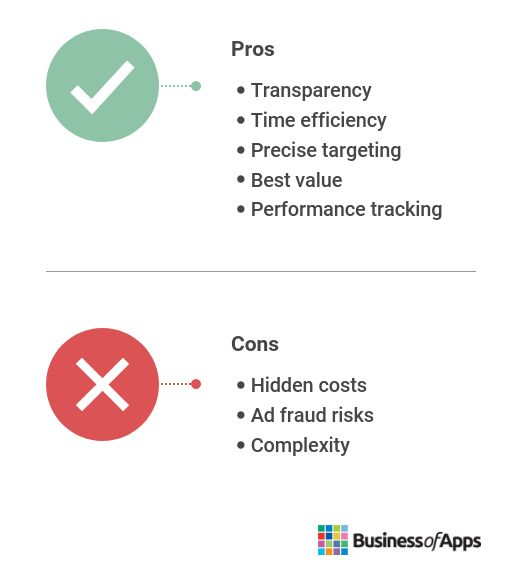The value of the best DSPs lies in its transparency. It is the platform’s capacity to empower advertisers to manage multiple ads, bid in real-time as well as efficiently track and optimize ad performance that makes it worth the investment.
Pros & Cons of using DSP advertising

Pros
Transparency
Most DSPs offer full transparency of what types of ad placements you are buying, tracking substandard offers and looking out for any fraud ads.
Time efficiency
If you commonly manage ad campaigns across more than one network, DSP dashboards ensure a great overview and easy management of everything, which can save a lot of valuable time.
Precise targeting
Thanks to DMPs, marketers are able to gather valuable user data. The more data, the more precise the targeting. And accurate targeting allows for more personalized ads and messages, resulting in higher conversions.
Best value
Not only do DSPs give you the best suitable ad placement, but they also allow you to buy impressions on platforms with quality audiences. With DSPs you don’t have to worry about wasting your money on empty traffic.
Performance tracking
You can analyze ad placements and their performance directly on the demand-side platform. This allows you to spot any errors immediately and fix it without wasting your budget.
Cons
Hidden costs
The process may be budget-friendly, but a lot of DSPs with various cost models can be rather pricey as a whole. Some may require monthly fees, or even include hidden costs, increasing your ad spend overall.
But we will expand on this, including the complexities of a DSP in the next part of the guide.
Ad fraud risks
When using such an automation marketing tool, there is always a risk in buying fraudulent impressions, and not all DSPs have sufficient ad fraud detection features in place.
So you want to be aware of any potential financial losses that may result from this.